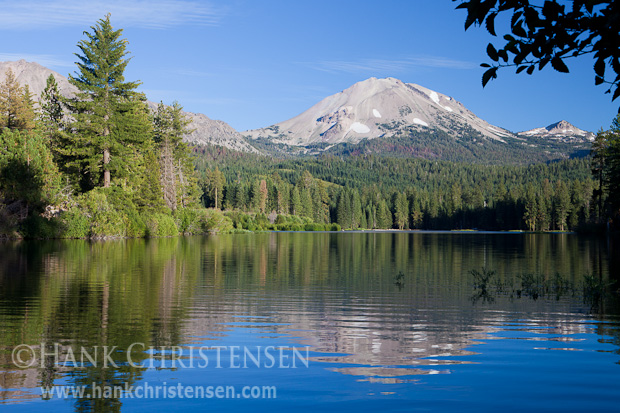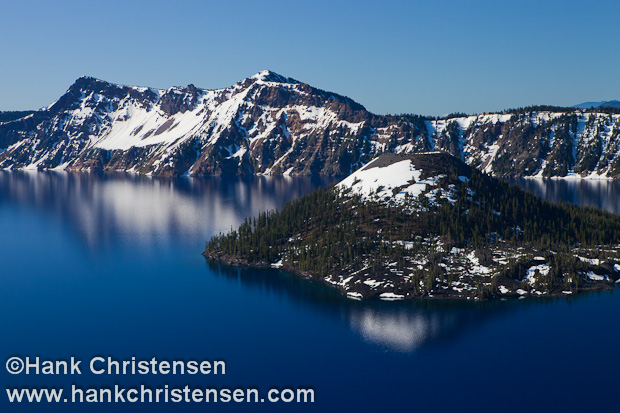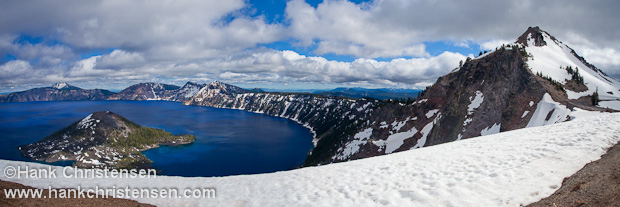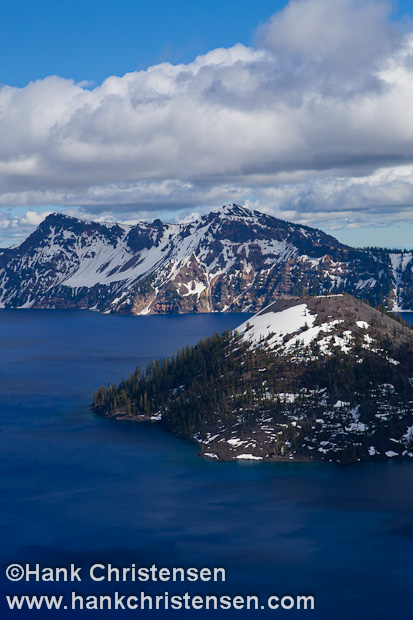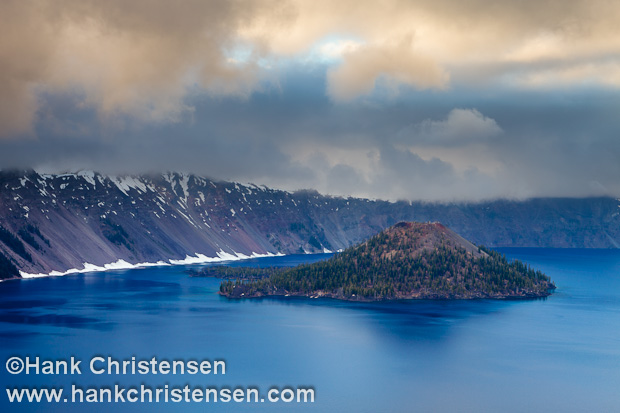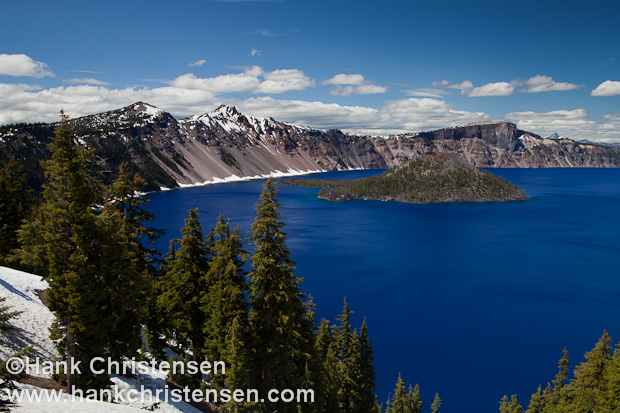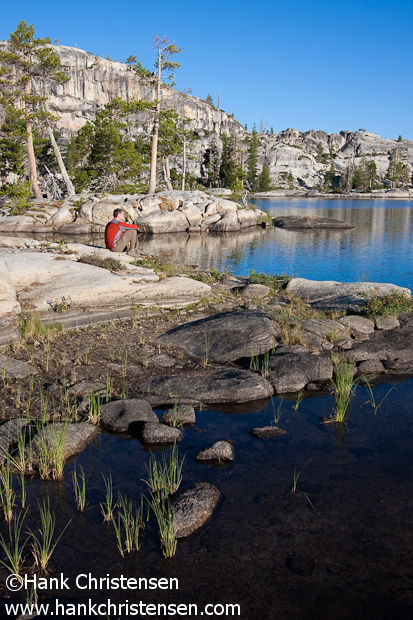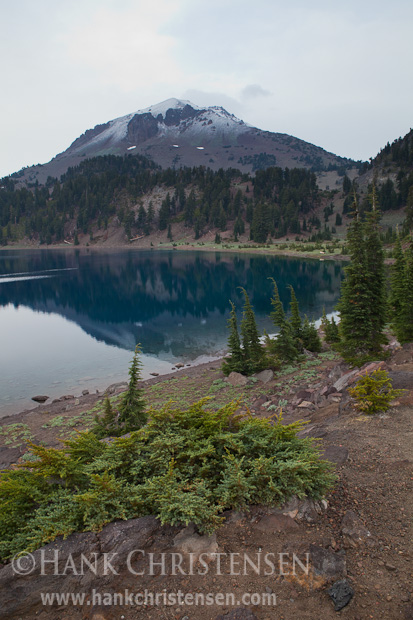
This week’s shot was taken on my way out of Lassen Volcanic National Park after a failed attempt at a solo backpacking trip. After trying to wait out the rain in the morning, I finally gave up and headed back home after my long drive only the night before. The rain was strong, and the dark clouds foreshadowed the wicked thunderstorm to come.
However, just as I was passing Lake Helen on the main road through the park, the rain stopped and I decided to take advantage of this brief respite. I parked my car by the lake and jumped out with my gear, hoping to make a few quick exposures before the storm started in again. I had the lake to myself, and I didn’t see a single car pass on the road while I was shooting. Although I knew the temperature had dropped the night before, I was surprised to see fresh snow on the top of the mountain. That was my second fresh snow of the summer, the first being at Crater Lake in July.
This shot is actually a combination to two images – a technique I’ve been using successfully for a couple of years. Traditional photographic technique would have required I use a graduated neutral density filter, in order to darken the exposure of the sky so as not to blow it out when I exposed for the foreground. Shooting digitally from a tripod allows me to create this effect later on the computer using two exposures instead of one. This saves the weight of the extra filters out in the field, and frees me up aesthetically.
First, I expose for the foreground light, and capture the frame as if the entire scene was lit evenly. This will result in an image where the sky (and in this case mountain top) is completely blown out and appears white in the photograph. Next (without moving the camera or tripod), I expose for the sky, rendering the foreground very dark, if not black. I later combine both images as separate layers of the same file in Photoshop, using layer masking and the gradient tool to blend them together, getting the best exposure for the sky and the foreground.
Soon after I got out of my car, it started raining again, and I knew it was time to leave. I’m glad I got this opportunity to shoot this area during a break in the storm – the rain could have easily let up somewhere else (or not at all), and I would have driven out of the park without another shot.

